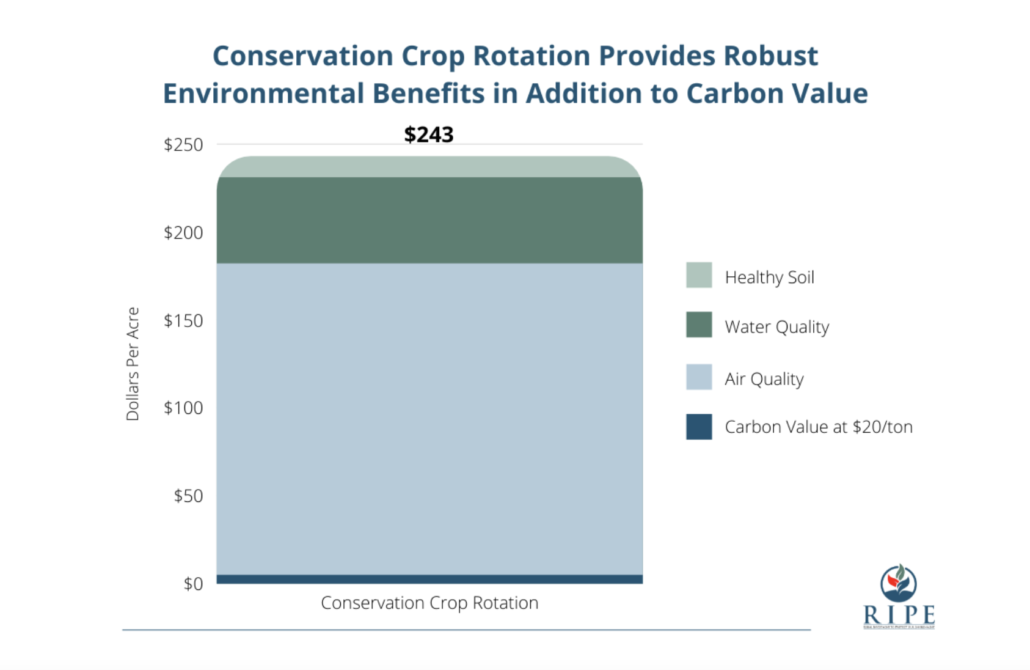A Closer Look at the RIPE Proposal’s Qualifying Practices: Conservation Crop Rotation
Our robust list of qualifying conservation practices deliver public benefits — including soil health, clean water, water conservation, wildlife conservation and climate mitigation — valued at more than $100 per acre or animal unit.
In April 2022, we approved conservation crop rotation (NRCS Code 328).
Conservation crop rotation reduces greenhouse gas emissions and provides additional environmental benefits valued at over $240 per acre per year.
We found that farmers who adopt conservation crop rotation provide over $170 in air quality benefits, nearly $50 in water quality benefits, and $12 in soil quality benefits per acre. They also reduce greenhouse gas emissions by over 0.2 metric tons per acre, which is about $4 per acre.
Review our methodology and sources in the chart here and access our current list of proposed qualifying practices here.

